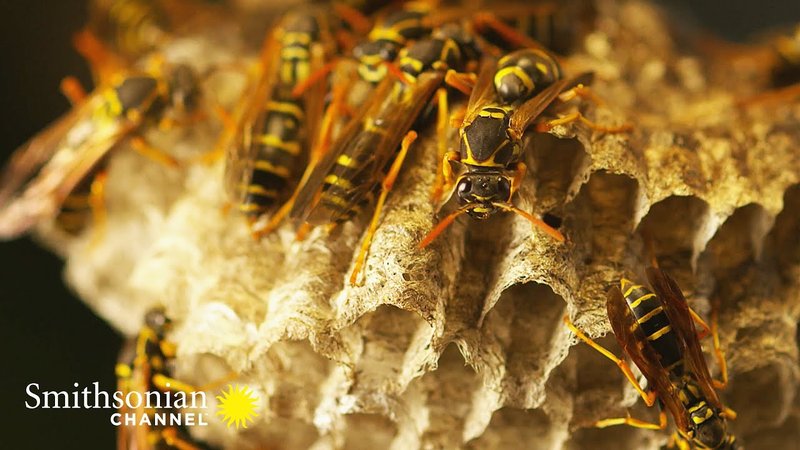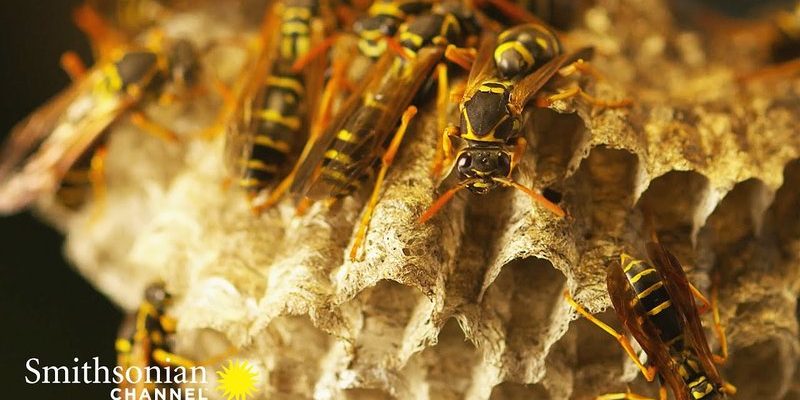
For many, the paper wasp serves as a metaphor for persistence, community, and even strength. Much like how bees create honeycombs, these wasps construct intricate nests from paper-like material made from plant fibers. This impressive feat represents more than just a shelter; it’s a symbol of collaboration and hard work. So grab your coffee, and let’s explore the fascinating world of paper wasps and the rich tapestry of symbolism they weave in our cultures.
What Are Paper Wasps?
Paper wasps belong to the family Vespidae and are known for their distinctive nests, which look like a series of inverted umbrellas. These nests are built from chewed wood fibers mixed with saliva, giving them that paper-like appearance. You might spot them hanging from tree branches or eaves of buildings during the warmer months.
Interestingly, there are more than 20 species of paper wasps, and they all share similar traits, such as a slender body, long legs, and a gentle temperament. That’s right; while they can sting, paper wasps are generally less aggressive than some of their wasp relatives, like hornets. They prefer to keep to themselves, only defending their nests if threatened. This relatively calm nature makes them fascinating creatures to study—and appreciate!
The Importance of Community
One of the standout traits of paper wasps is their community-oriented lifestyle. Each colony is built around a queen, who lays eggs while worker wasps handle the foraging, nest building, and caring for the young. This division of labor symbolizes teamwork and cooperation. You might think of it like a well-orchestrated play, with each wasp playing its role to ensure the success of the entire colony.
In many cultures, this teamwork resonates deeply. For instance, in Native American traditions, the paper wasp can represent unity and family ties. They demonstrate how different individuals working together can achieve common goals. It’s not just about the wasps; it’s a reflection of our communities, families, and even workplaces.
Symbolism in Various Cultures
Across the globe, paper wasps have found their way into folklore and symbolism. In some African cultures, they are admired for their industriousness and ability to adapt. This adaptability can inspire individuals to embrace change and challenges in their own lives.
In contrast, in certain Asian traditions, wasps symbolize harmony and protection. They are often viewed as guardians of the home. The sight of a paper wasp nest might even be welcomed as a good omen! In this light, they remind us of the importance of safeguarding our loved ones and the spaces we inhabit.
Art and Literature
The paper wasp doesn’t just stop at cultural folklore; they often make appearances in art and literature. Artists have drawn inspiration from their intricate nests and collaborative efforts. For example, you might find paintings depicting their nests draping like ornaments from tree branches, showcasing both beauty and complexity.
In literature, the paper wasp’s resilience might serve as a metaphor for the human condition. Authors might write about characters that embody the wasps’ sense of community or represent societal struggles, drawing parallels to how these insects work together to thrive. It’s fascinating how a creature so small can inspire such profound thoughts, isn’t it?
Lessons From the Paper Wasp
So, what can we learn from these little builders? The paper wasp teaches us about the power of collaboration and the significance of each individual’s role within a group. It’s a reminder that everyone, no matter how small, has something valuable to contribute.
Consider your own life. Are there times when working together has brought about better results? Maybe you’ve collaborated on a project at work or organized an event with friends. The paper wasp embodies the idea that by combining strengths, we can achieve more than we could alone.
The Paper Wasp and the Environment
Beyond their cultural symbolism, paper wasps play a crucial role in the ecosystem. They are natural predators of pests like caterpillars and flies, helping to maintain balance in our gardens and green spaces. This beneficial aspect makes them an essential part of biodiversity.
However, as we develop our homes and urbanize, these creatures face challenges. Habitat loss can threaten their populations, making it important to understand and appreciate their role. By recognizing the value of paper wasps, we can foster a respectful relationship with the insects around us, promoting a healthier environment for all.
The paper wasp may seem like a simple insect, but when you dive deeper, its cultural symbolism unfolds like layers in a well-crafted story. From teamwork and community to resilience and environmental significance, these little creatures represent important lessons.
So next time you see a paper wasp or its nest, take a moment to appreciate not just its role in nature, but also the broader messages it carries. Whether it’s inspiring us to work together or reminding us of our responsibility to the environment, the paper wasp is more than what meets the eye. Embracing these lessons could enrich our lives, just as they have enriched cultures around the world.

